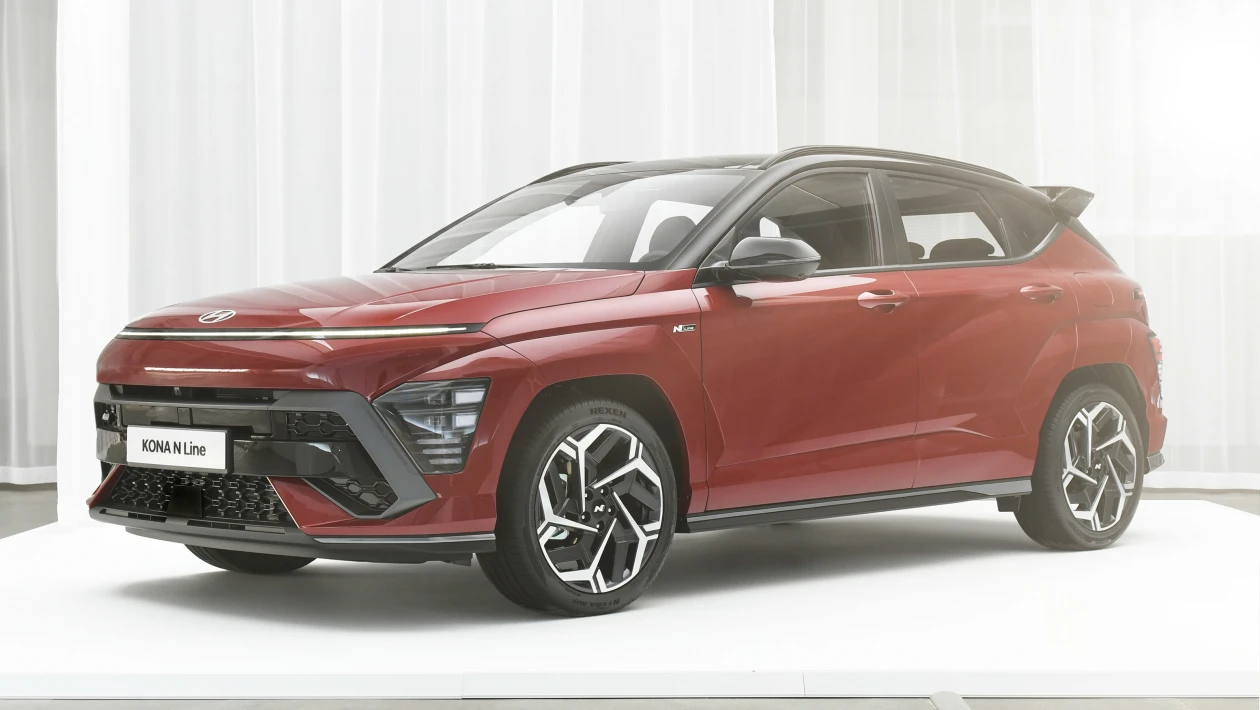Hyundai has revealed a heavily redesigned Kona Electric which is due in Australia later this year.
Hyundai has made huge gains in the electric-car market with its Ioniq 5 model. But the company hasn’t forgotten the more affordable end of the EV spectrum, and it will make a fresh push in that area of the market with the all-new Hyundai Kona.
The electric SUV will continue to be offered as a mild hybrid and a full hybrid, alongside a pure-electric version. But it’s the zero-tailpipe-emission edition that led the design process, because Hyundai’s team, led by SangYup Lee, elected to work on the Kona Electric first and then adapt it for the combustion-engined variants.
Hyundai says it has listened carefully to feedback from Mk1 Kona owners who requested extra cabin space and a larger load bay. So the second generation of the car is bigger than the model it replaces – longer by 175mm, at 4355mm, and with a 60mm stretch in wheelbase, to 2660mm.
The growth is noticeable in the cabin, where those sitting in a bench-style rear seat have more head and kneeroom than in the old car. Hyundai has certainly delivered gains in boot capacity; it jumps from the old car’s 332 litres to a more impressive 466 litres (only a few litres shy of the Kia Niro EV). A waterproof box under the bonnet has also been added for storing wet cables.
The looks of the Kona have been made more muscular and dramatic. There’s a sharper, flush front end and then complex surfacing along the flanks. Lee’s team delivered a crease line that rises from just aft of the front wheel right the way through the front and rear door, and then into a silver trim piece that wraps around the C-pillar into a spoiler at the end of the roof.
“We have used the growth of the car to introduce contrast between soft surfaces, such as on the bonnet, and sharp-radius creases, such as on the doors,” Lee told us. “We had many lessons that we learned from the Ioniq 6 that we were able to apply here.”
Inside, the front cabin is dominated by Hyundai’s twin-12.3-inch displays mounted in a single panel that runs across the top of the fascia. The firm has tried to make the cabin environment like a ‘lounge studio’ and there’s no doubt that it feels a more premium space than the old car’s. There’s greater use of neutral-colour fabrics, padded materials and backlighting in the newcomer.
The car sits on Hyundai-Kia’s K3 platform, as used by the latest Niro. Hyundai’s EV has a 65.4kWh battery and a 160kW front-mounted motor, delivering up to 490km of range. The electrics are based on 400V tech, instead of the 800V systems in the Ioniq 5, so charging times are slower. But Hyundai says that buyers at this price point are happy enough with the ability to recharge from 10 to 80 per cent in around 41 minutes.
Other tech includes a new version of the i-Pedal system, which allows selectable amounts of brake-energy recuperation, and vehicle-to-load charging capability, so users can power appliances such as a laptop.
The increase in size, improvements in cabin quality and latest-gen powertrains mean that the Kona is being nudged slightly upmarket for this generation but remains the brand’s most affordable EV offering in Australia.
There’s no word yet on whether Hyundai plans to follow up the current Kona N with a performance variant of any type. However, European CEO Michael Cole admitted that reaction to, and sales of, the forthcoming Ioniq 5 N could help to legitimise further all-electric performance models. This could, in theory, extend to an N variant of the Kona Electric. “Looking ahead, N can’t be just one car,” he said. “It’s got to have at least a few vehicles. So we have to look and ask, ‘After Ioniq 5, what comes next?’ And that decision is still open.”









